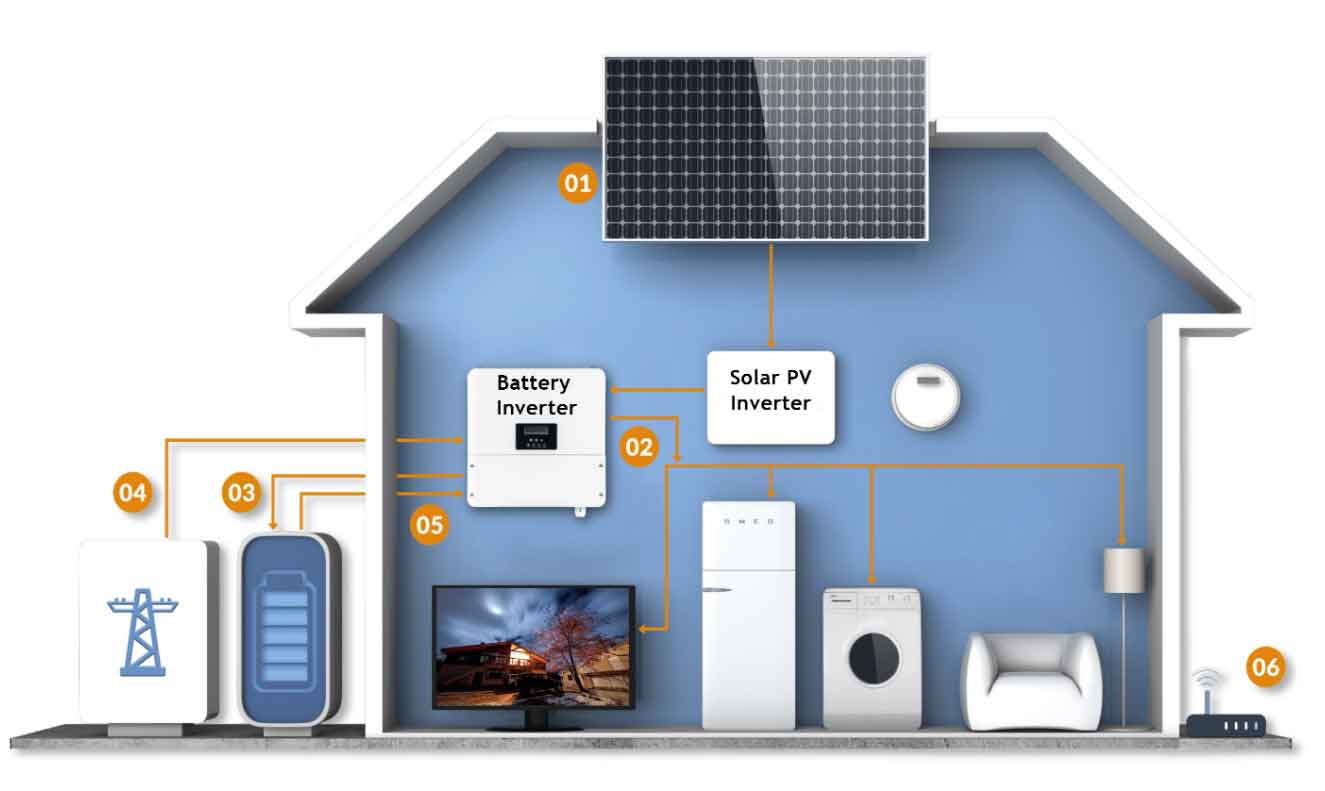
Introduction
Energy security is a critical component of modern society, ensuring that homes, businesses, and essential services have a reliable and continuous supply of electricity. In the face of increasing natural disasters and extreme weather events, achieving energy resilience has become more important than ever. Solar battery storage systems offer a promising solution for enhancing energy security and disaster resilience. This article explores various strategies for leveraging solar battery storage to improve disaster resilience, ensuring that communities remain powered and safe during emergencies.
Importance of Energy Security
Energy security involves the uninterrupted availability of energy sources at an affordable price. It is crucial for:
- Economic Stability: Ensuring businesses can operate without interruption.
- Public Safety: Powering essential services such as hospitals, emergency response, and communication networks.
- Quality of Life: Providing reliable electricity to households for heating, cooling, lighting, and communication.
Solar Battery Storage: A Key to Disaster Resilience
Solar battery storage systems can store excess energy generated by solar panels, providing a reliable power source during grid outages. This capability is especially valuable during disasters when traditional power sources may be disrupted.
Strategies for Enhancing Disaster Resilience with Solar Battery Storage
1. Decentralized Energy Systems
Decentralized energy systems, which include solar panels combined with battery storage, can enhance resilience by reducing reliance on centralized power grids. In the event of a grid failure, decentralized systems can continue to operate independently, providing power to homes and critical facilities.
2. Microgrids and Community Resilience
Microgrids are localized grids that can operate independently of the main grid. Integrating solar battery storage into microgrids enhances their ability to provide continuous power during disasters. These systems can supply energy to critical infrastructure such as hospitals, emergency shelters, and communication centers, ensuring they remain operational when needed most.
3. Emergency Preparedness Plans
Incorporating solar battery storage into emergency preparedness plans is essential for enhancing disaster resilience. This involves:
- Assessing Energy Needs: Identifying critical loads that must be powered during an outage.
- System Sizing and Design: Ensuring the battery storage system is adequately sized to meet these needs.
- Regular Maintenance and Testing: Keeping the system in optimal condition through regular checks and tests.
4. Grid-Interactive Systems
Grid-interactive solar battery storage systems can operate both connected to and independently from the grid. During normal operations, these systems can provide grid services such as peak shaving and load balancing. In the event of a grid failure, they can seamlessly switch to island mode, providing uninterrupted power.
5. Public Policy and Incentives
Supportive public policies and incentives are crucial for promoting the adoption of solar battery storage systems. This includes:
- Financial Incentives: Tax credits, rebates, and grants to reduce the initial cost of solar battery installations.
- Regulatory Support: Policies that encourage the integration of solar battery storage into building codes and disaster preparedness plans.
- Research and Development: Funding for innovation in battery technology and disaster-resilient energy systems.
Comparative Analysis of Strategies
The following table provides a comparative analysis of different strategies for enhancing disaster resilience with solar battery storage:
| Strategy | Benefits | Challenges |
|---|---|---|
| Decentralized Systems | Reduces reliance on central grid, local control | Higher initial cost, maintenance requirements |
| Microgrids | Supports critical infrastructure, localized control | Complex design, regulatory hurdles |
| Emergency Preparedness | Ensures readiness, tailored solutions | Requires planning and resources |
| Grid-Interactive Systems | Provides flexibility, dual functionality | Technical complexity, higher cost |
| Public Policy & Incentives | Encourages adoption, reduces costs | Requires political and public support |
Future Prospects
1. Advancements in Battery Technology
Ongoing advancements in battery technology, such as increased energy density, longer life cycles, and improved safety, will enhance the effectiveness of solar battery storage systems. These improvements will make the systems more affordable and reliable, further boosting disaster resilience.
2. Integrated Energy Solutions
Future energy systems will likely feature greater integration of solar battery storage with other renewable energy sources, such as wind and hydropower. This multi-faceted approach will provide even greater resilience and sustainability.
3. Community-Based Initiatives
Empowering communities to develop their own energy solutions, including solar battery storage, will enhance local resilience and reduce the burden on centralized systems. Community-based initiatives can also foster greater public engagement and support for renewable energy projects.
Conclusion
Solar battery storage systems are a vital component of disaster resilience strategies, offering reliable and sustainable energy solutions during emergencies. By adopting decentralized systems, microgrids, grid-interactive technologies, and supportive public policies, we can significantly enhance energy security and ensure that communities remain powered and safe during disasters. The continued advancement of battery technology and integrated energy solutions will further strengthen our ability to withstand and recover from natural disasters, paving the way for a more resilient and sustainable future.
